The field of image recognition has seen a tremendous transformation with the integration of AI technology. With the increasing importance of image recognition in various industries, such as healthcare, security, retail, and more, the demand for AI tools that can accurately detect and recognize images is on the rise. These AI tools not only help improve the efficiency of image recognition tasks but also provide valuable insights that can be leveraged to make informed decisions.
In this blog, we will explore some of the best AI tools for image recognition that are currently available in the market. From TensorFlow and OpenCV to Amazon Rekognition and Google Cloud Vision, we will discuss their features, capabilities, and use cases. Whether you are a developer, researcher, or business owner, this blog will provide you with valuable insights on the best AI tools for image recognition and help you make an informed decision on which tool to use for your specific needs.
TensorFlow
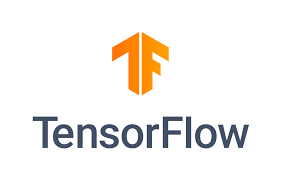
TensorFlow is a widely used open-source AI tool developed by Google for building and training machine learning models. It provides a comprehensive ecosystem of libraries, tools, and community resources for developing and deploying machine learning applications. TensorFlow supports a variety of use cases, including image and speech recognition, natural language processing, and reinforcement learning. Its flexible architecture allows developers to build models using high-level APIs, such as Keras, or to customize their own models using lower-level APIs. TensorFlow is known for its scalability and ability to handle large-scale data sets, making it a popular choice for enterprise-level applications.
Pros
Cons
Overall Rank
Keras

Keras is an open-source artificial intelligence (AI) tool that provides a user-friendly interface to build, train, and deploy deep learning models. Keras supports both convolutional and recurrent neural networks, as well as combinations of the two. With its simple and intuitive syntax, Keras allows developers and researchers to prototype, test, and refine their models with ease. Keras also offers a range of pre-trained models and utilities, including data preprocessing and augmentation functions, to facilitate the development of complex AI solutions.
Pros
Cons
Overall Rank
PyTorch

PyTorch is a popular open-source machine learning library based on the Torch library. Developed by Facebook's AI research team, PyTorch is widely used for building deep learning models and is known for its flexibility, ease of use, and dynamic computational graph feature. The library supports both imperative and declarative programming styles and offers a range of tools for building and deploying machine learning models, including data loaders, optimization algorithms, and pre-trained models. With PyTorch, developers can build complex models faster and with greater accuracy, and experiment with new ideas and architectures quickly due to its dynamic nature.
Pros
Cons
Overall Rank
Caffe

Caffe is an open-source deep learning framework that is popular for its speed and efficiency. Developed by the Berkeley Vision and Learning Center, Caffe enables researchers and developers to build, train, and deploy deep neural networks for a wide range of computer vision and machine learning applications. Caffe supports a variety of network architectures, including convolutional neural networks (CNNs), recurrent neural networks (RNNs), and fully connected networks, and can be run on both CPU and GPU architectures. With its easy-to-use interface, Caffe allows users to focus on building and fine-tuning their models rather than worrying about the implementation details.
Pros
Cons
Overall Rank
Microsoft Cognitive Toolkit

The Microsoft Cognitive Toolkit (CNTK) is an open-source artificial intelligence (AI) tool designed to facilitate deep learning algorithms. It is designed to provide a distributed training approach that enables users to train deep learning models on multiple machines simultaneously. With CNTK, developers can easily build, train, and deploy deep learning models for speech recognition, image and video recognition, and natural language processing tasks. One of the most significant advantages of CNTK is its ability to scale across multiple GPUs and multiple machines, which means that it can handle large-scale datasets with ease. Moreover, it supports several programming languages such as Python, C++, and C#, making it highly accessible to developers of all backgrounds.
Pros
Cons
Overall Rank
Torch

Torch is an open-source machine learning library that is widely used for deep learning applications. Torch has gained popularity in the research community due to its ease of use, flexibility, and efficient implementation of dynamic computational graphs. Torch supports popular deep learning frameworks such as PyTorch, which enables researchers to experiment with different deep learning models and easily integrate them with their workflows. Torch also includes powerful tools for building and training neural networks, as well as tools for data preprocessing, visualization, and evaluation. Overall, Torch is a powerful tool for machine learning practitioners who want to build and deploy deep learning models efficiently.
Pros
Cons
Overall Rank
Theano

Theano is a Python-based open-source numerical computation library that allows developers to efficiently define, optimize, and evaluate mathematical expressions involving multi-dimensional arrays. It was developed by the Montreal Institute for Learning Algorithms (MILA) at the University of Montreal and is particularly useful for building and training deep neural networks. Theano has gained popularity due to its flexibility, speed, and ability to run computations on both CPUs and GPUs. It provides high-level abstractions for defining mathematical operations, enabling developers to focus on the design of the neural network architecture rather than the implementation of low-level optimizations. Theano also offers extensive documentation, tutorials, and examples that make it easier for developers to get started with building deep learning models.
Pros
Cons
Overall Rank
OpenCV
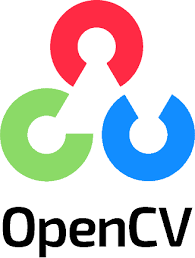
OpenCV AI tool is a powerful open-source computer vision library that is used for real-time computer vision and machine learning tasks. OpenCV AI tool allows developers to build complex computer vision applications with ease, using various programming languages such as C++, Python, and Java. OpenCV AI tool provides a wide range of functions that enable developers to detect and recognize faces, track objects, perform image segmentation, and much more. Its extensive documentation and active community make it easy for developers to learn and integrate OpenCV AI tool into their projects.
Pros
Cons
Overall Rank
Apache MXNet

Apache MXNet is an open-source deep learning framework that provides a flexible and efficient platform for developing and deploying machine learning models. One of the key features of MXNet is its ability to scale to multiple GPUs and multiple machines, making it a great choice for large-scale projects. MXNet also supports multiple programming languages such as Python, R, and C++, providing developers with the flexibility to choose the language they are most comfortable with. Additionally, MXNet has a user-friendly interface and supports various neural network architectures, including convolutional neural networks (CNNs), recurrent neural networks (RNNs), and transformers. Overall, Apache MXNet is a powerful tool that can help developers build and deploy robust and scalable machine learning models.
Pros
Cons
Overall Rank
DLib
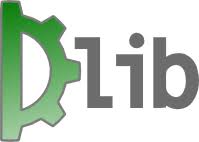
DLib is an open-source machine learning library written in C++. It is designed to provide high-performance implementations of common machine learning algorithms and is widely used in research and industry. DLib's strength lies in its ability to handle large datasets efficiently and its support for a wide range of machine learning tasks, including object detection, face recognition, and image segmentation. One of DLib's unique features is its implementation of the correlation tracker, a fast and accurate algorithm for tracking objects in video streams. DLib is also known for its ease of use, thanks to its clean and intuitive API, and its extensive documentation and tutorials.
Pros
Cons
Overall Rank
Google Cloud Vision API
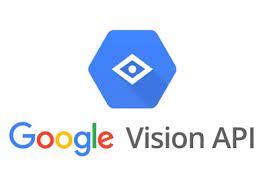
Google Cloud Vision API is an AI tool that allows developers to integrate advanced image analysis capabilities into their applications. With this tool, users can easily classify images into different categories, extract text and objects, detect faces and emotions, and even recognize landmarks. The API uses machine learning algorithms to analyze images and provide accurate results, making it an excellent tool for businesses that need to process large amounts of visual data. Additionally, the tool's ease of use and flexibility make it accessible to developers of all skill levels, allowing them to build advanced image recognition capabilities into their apps quickly and efficiently.
Pros
Cons
Overall Rank
IBM Watson Visual Recognition

IBM Watson Visual Recognition is a powerful AI tool that enables businesses to extract valuable insights from visual content. It uses advanced deep learning algorithms to analyze images, videos, and other visual data and identify patterns, objects, and text within them. This tool can be used for a variety of applications, including image classification, object detection, and facial recognition. It can help businesses streamline their operations, improve customer experience, and gain a competitive edge by providing real-time insights into customer preferences, product usage, and other key metrics. With its easy-to-use API and intuitive user interface, Watson Visual Recognition can be integrated into a wide range of applications and workflows, making it a valuable tool for businesses of all sizes.
Pros
Cons
Overall Rank
Clarifai

Clarifai is an AI-powered computer vision tool that enables businesses and developers to easily integrate image and video recognition capabilities into their applications. With Clarifai, users can quickly and accurately identify objects, scenes, and concepts within images and videos, as well as generate descriptive tags and captions. This can help streamline workflows and enhance the user experience across a wide range of industries, from e-commerce and social media to healthcare and security. The tool's intuitive API and customizable models make it easy for developers to train and fine-tune models for their specific use cases, while its powerful algorithms and neural networks ensure high accuracy and reliability.
Pros
Cons
Overall Rank
Amazon Rekognition
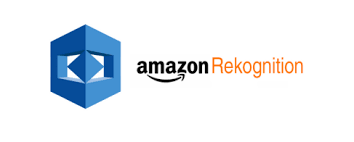
Amazon Rekognition is an AI tool developed by Amazon Web Services that allows developers to add image and video analysis capabilities to their applications. The tool uses deep learning models to perform various tasks such as facial recognition, object detection, and text recognition. It can be integrated with other Amazon Web Services such as S3, Lambda, and SageMaker, making it easy to implement in existing workflows. Rekognition can be used in various industries, including law enforcement, retail, and entertainment. Its high accuracy and ease of use make it a valuable tool for developers looking to add AI capabilities to their applications.
Pros
Cons
Overall Rank
Imagga

Imagga is an AI-powered image recognition tool that helps businesses and individuals to automatically tag and categorize their images. This tool is particularly useful for companies that deal with a large number of images and need to organize them efficiently. With Imagga, users can easily search for specific images and improve their workflow. The tool uses machine learning algorithms to analyze images and extract important information such as objects, colors, and textures. This helps in creating accurate and relevant tags for each image, which can then be used for searching, filtering, and sorting. Additionally, Imagga provides a customizable API that can be integrated with other software applications, making it a versatile tool for businesses of any size.
Pros
Cons
Overall Rank
Deepomatic

Deepomatic is an AI tool that helps businesses automate their visual inspections and streamline their processes. It uses computer vision and machine learning to analyze images and videos, identifying objects, defects, and anomalies in real-time. This AI tool can be customized to fit different industries and applications, from quality control in manufacturing to security surveillance in retail. Deepomatic's user-friendly interface allows businesses to easily create and deploy their own AI models, without requiring extensive technical knowledge or coding skills. With its advanced capabilities and flexibility, Deepomatic can significantly improve the efficiency and accuracy of visual inspections, reducing the risk of errors and increasing productivity.
Pros
Cons
Overall Rank
In conclusion, the field of image recognition has seen significant advancements with the help of AI technology. There are now numerous AI tools available that can accurately detect and recognize images with a high level of precision and speed. These tools can be extremely useful in a wide range of industries, including healthcare, retail, manufacturing, and more. Some of the best AI tools for image recognition that we have discussed in this blog include TensorFlow, OpenCV, Amazon Rekognition, Google Cloud Vision, and Microsoft Azure Cognitive Services. Each of these tools has its unique features and capabilities, making them suitable for different use cases. However, what they all have in common is their ability to enhance the efficiency and accuracy of image recognition tasks. With the growing importance of image recognition in various industries, the demand for these AI tools is only set to increase. As AI technology continues to evolve, we can expect even more advanced and sophisticated image recognition tools to emerge. These tools will not only make image recognition more accurate and efficient, but they will also help unlock new insights and opportunities in fields such as healthcare, security, and retail.
